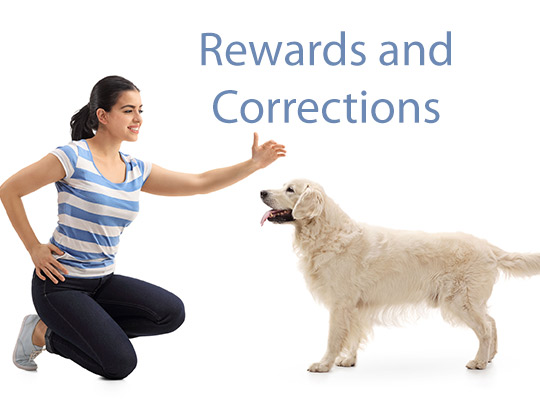Rewarding Your Dog
Food
Food is the strongest and most effective practical reward. This primary reinforcer is used by many trainers and animal behaviorists. The key to using food reinforcers is to establish a schedule of reinforcement. When teaching a new behavior, reward every time the dog performs the task. As the dog becomes proficient, reward only occasionally. Eventually phase out the food altogether. Freeze dried meet products are excellent treats because they are high in protein and low in calories.
Verbal praise
Praise is effective in some cases. The tone of your voice is more important than what you say. High‑pitched, happy voices are pleasing to dogs. Verbal praise can be delivered anytime, anywhere, but your timing must be accurate for the praise to be effective. If verbal praise is given at the same time as a food reinforcer, the dog will pair the two reward, and your verbal praise will have greater impact, even when not paired with food.
Petting
Petting or stroking is pleasant for dogs. Often, however, this reward takes place after ‑ not during ‑ the execution of the desired behavior, which can confuse the dog. Some dogs react adversely to touch: It overstimulates them and causes them to lose concentration. Be sure that your strokes are not distracting to your dog.
Attention
Attention is valued by all dogs. Just by acknowledging a behavior, you will be delivering a reward. For example, some dogs bump against people when they want to be petted. If you respond to the bump ~ even by telling your dog to go away ‑ you have given the dog attention. It will bump you again if it wants more attention. It is not an immediate reward, but it is a powerful one. Knowing your dog’s favorite activities can help you identify a good reward for it. If your dog likes to chase balls, toss some to your pal at the end of a training session. The dog will associate the pleasant event with the braining session. This type of reward allows both of you to let off steam.
CORRECTIONS
Scruff shakes
Scruff shakes imitate the correction a mother dog gives her pups. The message is loud and clear: No! Grab the loose skin on the back of the neck and shake ~ hard. The dog may yelp, but its feelings will have been hurt more than anything else. This exercise helps establish you as pack leader.
The Rattle Can
A Rattle Can is a beverage can filled with 5 or 6 pennies and taped shut is a handy tool to have around. The can is used to startle the dog when it misbehaves. If the dog is digging, chewing or barking at an inappropriate time, startle it by tossing the can at its feet. (Do not deliberately hit the dog with the can.) Thus, the dog associates the correction with the act, not with the owner. Most dogs are sensitive to noise, and the rattle can is very effective, if your timing is good.
Noises
Noises such as shouts, high pitched tones and pounding are effective with most dogs. The key is to startle the dog enough to interrupt its naughty behavior. Then remove the dog from the scene of the crime. Never punish a dog by placing it in its crate; the crate should be a place of retreat for the dog, not a place to put it when it is “in the dog house”.
Verbal Reprimands
Verbal reprimands are effective with some dogs. The verbal correction must be firm and sharp. Your facial expression should match your irritated tone of voice. If verbal corrections are paired with other corrections, they will be stronger.
Physical Correction
Physical correction does more harm than good. Instead of producing a sound‑tempered dog, it can destroy the dog’s temperament. Dogs that are hit often become fearful and unreliable. Other corrections are much more effective.

